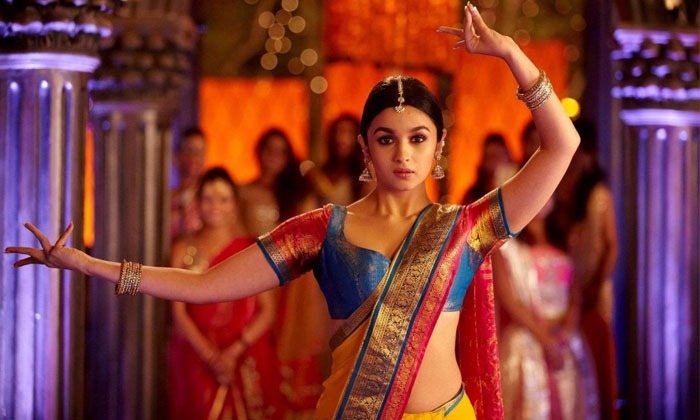India is a large country that is full of wonders. From diverse kinds of natural landscapes to multiple cultures to a variety of arts based on the location, India is a land that is a mix of diverse heritage. Among these varieties of art forms, classical dance of India is the most notable. They not only retell glorious stories of the past but also uniquely reflect the heritage of the region they hail from. These dance forms have deep roots that can be traced back to religious beliefs, holy scriptures and ancient traditions. They are the artistic representation of the story their birthplace tells.
The Graceful South
- Bharatanatyam: Hailing from the state of Tamil Nadu, Bharatnatyam is the dance of footwork. The dancers, bedecked in vibrant costumes and jewellery, go through an intricate routine with their hands and feet. Bharatnatyam can be traced back to the temples in Tamil Nadu. It is said to be the dance devoted to the gods and deities that protect those lands. It mesmerizes the audience with its intricate footwork and expressive mudra that follows a strong rhythm and music, which gives it an ethereal look.
- Kuchipudi: Kuchipudi is a dance that originated in Andhra Pradesh. This dance form is a beautiful blend of the dancer’s devotion, music and drama. This dance form is also famous for its energetic and vibrant male roles. Storyteller weaves the story of mythology and folklore with alluring lyrics and adds a touch of humour to increase its essence.
- Mohiniyattam: The state of Kerala gave this country the Mohiniyattam. It is one of the major classical dance of India, which has a distinct identity. It usually consists of fluid movements, soft gestures, and swaying postures of the dancer. This has given it fame as a feminine dance form among classical dance of india. This graceful and elegant dance form is said to be dedicated to the divine enchantress ‘Mohini,’ hence its name.
- Odissi: Odisha is famous for its distinctive dance form called Odissi. It is known for its sculptural poses and very dynamic movements of the dancer. Similar to other dance forms in India. Odissi has its roots buried deeply within the temples of Odisha. Similar to Bharatnatyam, it is a dance form dedicated to Gods and entities residing in the temples of Odisha. Odissi dancers portray a wide variety of facial expressions and intricate eye movements to enchant their viewers.
- Kathakali: Hailing from the lands of Karnataka, this dance received patronage from the palace itself. It is an art form which dramatizes the epic tales and mythologies of the land like Ramayana and Mahabharata and presents them in grandeur. This dance uses makeup and costumes to symbolize the character’s personality and storyline. However, the most notable feature of this dance is the billowing skirts and elaborate headdresses adorned by its male dancers.
The Dynamic North
- Kathak: While the specific location of its origin is unknown, kathak is said to be a dance art form which was born in Mughal courts. For a long time in history, kathak was a royal form of entertainment. It is described as a dance that has a very fast-paced footwork along with lots of spins that follow the rhythmic pattern of the song or music. It is said to be more than just a dance form. It is a way to express perspectives and narrate stories to its audience, in a way, it is a beautiful blend of different cultures that gives us a lesson about the beauty of coexistence.
- Manipuri: This dance form has its place of origin forever engraved into its name. Manipuri, which means from the land of Manipur, is one of the most revered classical dance of India that is famous for its lyrical movement and soft circular patterns. The dancers perform with lots of grace and poise, which gives it a divine vibe. Manipuri is a dance that is deeply connected to its roots and Vaishnavism.
- Sattriya: Sattriya is a classical dance of India form that originated in the northeastern state of Assam. It is a dance form that has been strongly influenced by Vaishnavism and has an element of devotion. It is a beautiful combination of music, dance, and drama. While the music used in this dance itself has a story behind it, it is a dance form that requires a lot of energetic movements from the dancer. It also requires them to follow complex rhythms and devote themselves to the dance as well as their deities.
Unity in Diversity
Classical dance of India are as diverse as they are complicated. They differ based on their regions, dance styles, visual representation, and storytelling. However, they share a common root in Natyashastra, which is an ancient scripture dedicated to performing arts. Due to this reason, all of these dances have several common factors despite being so different from each other.
- Music and Rhythm: Music and rhythm are the soul of Classical dance of India. These performances are usually accompanied by local musical instruments that may vary based on the region. Music not only gives a flow to the narration of the story and the movement of the body but also gives each dance form its own distinct characteristics.
- Costumes and Jewelry: There is nothing more dramatic than the costume and jewellery adorned by the dancers of Classical dance of India. While each style of dress and jewellery may vary based on the culture and regions the dance originates from, the few common things are that they are vibrant, colourful, occasionally dramatic, and eye-catching.
- Themes and Stories: Classical dance of India are more than just performing arts. They are a way of telling grand stories, weaving mythology and folklore into visual performances and enacting the country’s grand past. Although the themes come from common roots, they differ based on the way they are portrayed on the stage.
Conclusion
Classical dance of India are an amazing way of exploring the country’s diversity. They are not only entertaining but also educational and informative about the local culture, which helps to increase the appreciation among the audience.
Keep an eye for more news & updates on Gossips!




